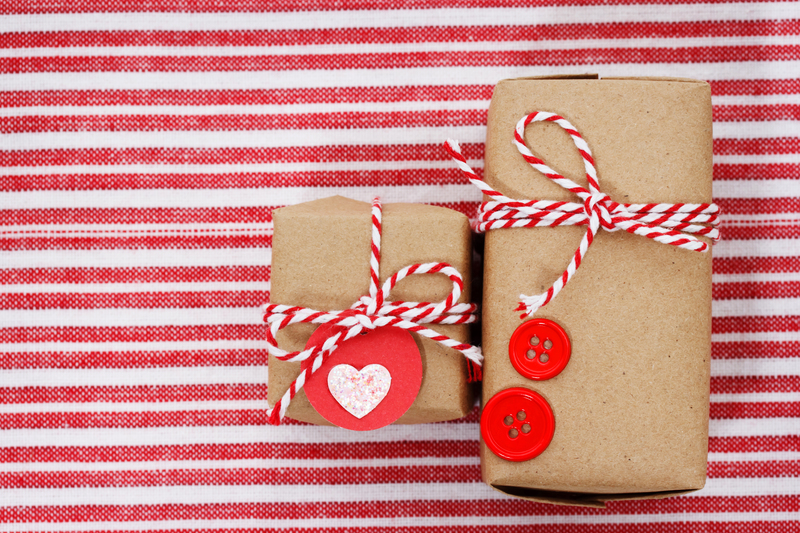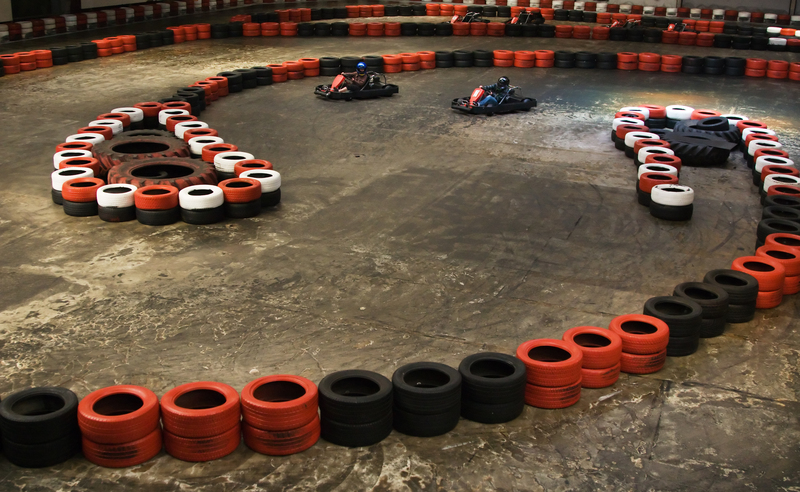Transform Your Home with These Plastic-Free Ideas
Are you looking to eliminate plastic from your home and create a more eco-friendly living space? In today's world, it's easier than ever to embrace a sustainable lifestyle by integrating plastic-free alternatives into your household. Reducing plastic not only helps the environment but can improve your health and well-being. This comprehensive guide will introduce actionable strategies and inspiring plastic-free ideas to revamp each corner of your home. Get ready to discover how you can truly transform your home with these plastic-free ideas!
Why Go Plastic-Free at Home?
Plastic pollution is one of today's most pressing environmental challenges. Single-use plastics, microplastics, and plastic packaging often end up in landfills and oceans, impacting wildlife and contaminating our food and water sources. Going plastic-free at home means making conscious decisions that contribute to a cleaner planet. Adopting a plastic-free home environment also leads to other benefits:
- Reduces exposure to harmful chemicals like BPA and phthalates
- Decreases your carbon footprint
- Saves money through reusable products
- Encourages mindful consumption
- Supports a healthier lifestyle for you and your family

Room-by-Room Guide: Implementing Plastic-Free Home Ideas
Ready to transition to a plastic-free household? Below you'll find a practical, room-by-room breakdown of plastic-free home solutions that are easy to implement yet highly impactful.
The Kitchen: Heart of Plastic-Free Living
The kitchen is often the starting point for a plastic-free journey because of the significant waste generated from food packaging, utensils, and cleaning supplies.
Here are plastic-free ideas for your kitchen:- Bulk and Loose-Buy Shopping: Shop at stores that allow you to buy grains, spices, nuts, and other ingredients in bulk. Bring your own glass jars or cloth bags to avoid plastic packaging.
- Swap Plastic for Glass or Stainless Steel: Use glass containers, stainless steel tiffins, and silicone lids to store leftovers or packed lunches.
- Beeswax Wraps: Replace cling film with reusable beeswax wraps for covering food.
- Bamboo or Wooden Utensils: Invest in bamboo spatulas and wooden spoons instead of plastic ones, which can leach chemicals into your food.
- Compostable Sponges and Brushes: Try natural alternatives like coconut fiber scrubbers or cloths for dishwashing and cleaning.
- Soap Bars Over Bottles: Skip liquid dish soap in plastic bottles. Try dish soap bars or refill at a bulk store.
- Buy Local and Seasonal Produce: Shop at farmers' markets and bring your own bags to avoid produce wrapped in plastic.
- Filtered Tap Water: Install water filters and use glass bottles or stainless steel pitchers rather than buying bottled water.
Tip: Transform your pantry by decanting everything--rice, beans, flours--into jars, which both looks stylish and nixes the need for plastic packaging.
Bathroom: Plastic-Free Daily Rituals
Our bathrooms are filled with plastic: shampoo bottles, toothbrushes, razors, and more. Revamp your bathroom with these plastic-free ideas:
- Bamboo Toothbrushes: Biodegradable and just as effective as plastic ones.
- Toothpaste Tablets or Powders: Replace traditional toothpaste tubes with tablets or powders sold in reusable glass jars.
- Solid Shampoo and Conditioner Bars: These last longer, avoid plastic bottles, and work just as well as liquids.
- Safety Razor: Switch from disposable plastic razors to a sturdy metal safety razor with recyclable blades.
- Reusable Cotton Rounds: For makeup removal and cleansing, washable organic cotton pads can be used again and again.
- Plastic-Free Toilet Paper: Choose brands that wrap toilet paper in paper instead of plastic, or consider bidet attachments for a zero-waste solution.
- Natural Loofahs and Soap Bars: Ditch synthetic sponges and shower gels for plant-based loofahs and bar soap wrapped in paper.
- Refill Stations: Use local zero-waste shops to refill containers with soap, shampoo, and other essentials.
Going plastic-free in the bathroom is simpler than you think. A few well-chosen swaps can substantially reduce your overall household waste.
Plastic-Free Living Room Inspiration
The living room is where we relax and entertain. Often, plastic sneaks in through electronics, decor, and packaging.
To create a green, inviting plastic-free living space, consider:- Natural Fiber Textiles: Choose cotton, linen, or wool curtains, rugs, and throws instead of synthetic fabrics.
- Wood or Metal Furniture: Invest in quality pieces made from sustainable materials that last and avoid composites containing plastics.
- Secondhand Treasures: Vintage and pre-loved items are eco-friendly and help keep plastics out of landfills.
- Plants as Decor: Green up your space with potted plants rather than plastic ornaments or synthetic flowers.
- Eco-Friendly Storage: Use woven baskets, metal bins, or upcycled wood crates for organizing instead of plastic bins.
- Digital Media: Opt for e-books and streaming to reduce physical disc and DVD use (most are plastic-based).
Enhance your living space's comfort and elegance with timeless, eco-conscious choices that show off your unique style.
Bedroom: Eco-Friendly Retreats
Your bedroom should be a peaceful, plastic-free sanctuary. From bedding to storage, try these practical changes:
- Organic Cotton Bedding: Trade synthetic bed sheets for organic cotton, hemp, or linen for natural comfort and durability.
- Wool or Cotton Mattresses: Go for mattresses made of natural latex, cotton, or wool instead of foam and polyester-based types.
- Wood and Rattan Storage: Store clothing and accessories in wood or rattan baskets instead of plastic drawers.
- Avoid Polyester Curtains and Cushions: Select items filled with organic kapok or cotton and covered in plant-based textiles.
- Plastic-Free Closet Hangers: Try bamboo, wood, or metal hangers over polycarbonate versions.
- Minimal Synthetic Decor: Choose artwork, pottery, or fabric wall hangings to avoid acrylic and plastic-based art frames.
Tip: Research local artisans for handcrafted, sustainable decor that replaces mass-produced plastic goods.
Laundry and Cleaning: A Greener Routine
Laundry rooms and cleaning supplies are huge plastic offenders. Doing laundry and keeping things spotless can be plastic-free, too:
- Soap Nuts or Laundry Strips: Swap plastic jugs for compostable soap nuts, coconut-based powders, or laundry detergent strips in cardboard packaging.
- Drying Racks & Wool Dryer Balls: Use wooden drying racks and wool dryer balls instead of plastic dryer sheets.
- Refillable Cleaning Products: Source concentrates or powders you can mix in reusable glass bottles.
- Baking Soda and Vinegar: Effective natural cleaners that come in cardboard and glass packaging.
- Old T-Shirts as Cleaning Rags: Repurpose soft old cotton shirts rather than microfiber cloths (which shed microplastics).
If you do use a washing machine, consider a microfiber filter bag: it captures shed microplastics from synthetic clothes so they don't go down the drain.
Hacks and Habits for a Plastic-Free Lifestyle
Transforming your home is most successful when you integrate plastic-free habits into your daily routine. Here are tricks and mindset shifts to support every family member:
- Bring Your Own Bags: Reusable shopping bags are essential for grocery and retail trips.
- Choose Refill and Bulk: Always prioritize shops where you can refill containers or buy items loose.
- Support Plastic-Free Brands: Shop with companies dedicated to sustainable packaging and non-plastic materials.
- DIY When Possible: Make snacks, cleaning products, and beauty skincare at home--keeping packaging and ingredients simple and plastic-free.
- Share Knowledge: Talk about your journey with friends and family--more awareness, more change!
- Recycle Responsibly: While recycling isn't the solution, ensure any unavoidable plastics are properly sorted and recycled where possible.
- Repair Before Replacing: Give household goods a second life by mending or upcycling instead of buying new plastic versions.
- Minimalist Mindset: Fewer items mean less waste. Consider what you genuinely need before bringing new things into your home.
By making plastic-free living a habit, your home will truly reflect a commitment to sustainability--benefiting both you and the planet.
The Benefits of a Plastic-Free Home
A commitment to plastic-free home ideas comes with a multitude of rewards:
- Healthier Living: Avoids contact with hormone-disrupting chemicals found in many plastics.
- Improved Air Quality: Fewer plastics mean less off-gassing and cleaner air inside.
- Reduced Waste: Cuts what you send to landfills and recycling centers.
- Support for Ethical Businesses: Encourages the growth of companies prioritizing eco-friendly solutions and fair labor.
- Greater Mindfulness: Every purchase and action is more intentional and considered.
- Inspiring Others: Your home becomes a model for guests and family, lighting the way to wider change.

FAQs About Plastic-Free Homes
Is it expensive to go plastic-free?
Not necessarily! While some swaps like stainless steel containers or organic bedding may have a high upfront cost, plastic-free living saves money over time through better durability, less waste, and more mindful shopping.
What are the most impactful plastic-free switches?
The best changes are those you make in high-use areas: water bottles, shopping bags, food storage, and personal care products. Start small so the habit sticks, then expand your efforts.
Can children get involved in a zero-plastic home?
Absolutely! Kids can help decorate reusable containers, choose favorite beeswax wrap patterns, and learn about why going plastic-free is important to their future.
How can I shop for plastic-free products?
Look for retailers and online shops specializing in plastic-free or zero-waste goods. Read packaging information, seek out refills, and explore local farmers' markets for unpackaged produce.
Your First Steps to a Plastic-Free Home
Every journey begins with a single step. Pick one room to start your transition--perhaps your kitchen or bathroom. Swap out the most obvious plastic items for eco-friendly versions, and slowly expand plastic-free principles to the rest of your home.
Remember, perfection isn't necessary: what matters is progress and dedication to a greener lifestyle. Each swap, habit, and mindful purchase puts you on the path to a truly sustainable, plastic-free sanctuary.
Take action today--embrace these plastic-free home ideas and watch your living environment transform for the better!

